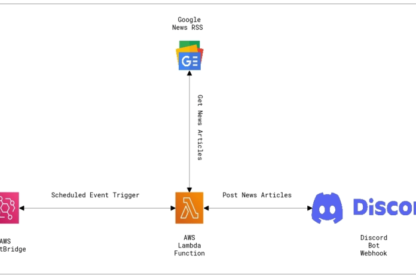Tokenization is a critical concept in programming that plays a significant role in various domains. In the world of JavaScript, tokenization holds immense importance. In this article, we will delve into the concept of tokenization, explore its significance, and provide practical examples using JavaScript code snippets. We will take a unique approach to explain tokenization, breaking down complex ideas into easily understandable concepts.
What is Tokenization?
Let assume you have a sentence written in a language that only a computer can understand. Tokenization is the process of dissecting that sentence into smaller meaningful units called tokens. These tokens serve as the fundamental building blocks of a programming language and carry specific meanings. In simpler terms, tokenization can be compared to breaking down a sentence into individual words, where each word represents a token.
Significance of Tokenization
Tokenization holds immense significance in the compilation process of programming languages. It helps computers understand and interpret the code written by developers. By breaking the code into tokens, a language parser can efficiently analyze and process them. Tokenization acts as a crucial preliminary step before parsing, which converts tokens into a structured representation, enabling accurate execution of instructions.
How is this Important to you as a Developer
- Enables syntax highlighting and improves code readability in editors.
- Supports linting and code analysis tools for error detection and code improvement.
- Helps in debugging by identifying and locating syntax errors.
- Enables custom parsing and language extensions for specialized requirements.
JavaScript Tokenization
JavaScript, being a high-level programming language, relies heavily on tokenization. When you write JavaScript code, the JavaScript engine performs tokenization behind the scenes to parse and execute it. Let’s explore a few examples to understand tokenization in the context of JavaScript.
How to initiate Tokenization in JavaScript
In JavaScript, tokenization is automatically performed by the JavaScript engine during the parsing phase. Developers do not need to explicitly initiate tokenization. However, understanding the process can help you grasp how the engine interprets your code. Here’s an example to illustrate the tokenization process:
var code = 'var x = 5 + 3;';
var tokens = code.match(/(bw+b|[^s])/g);
console.log(tokens);
In this code snippet, we have a JavaScript code stored in the code variable. To tokenize the code, we use a regular expression (‘/(bw+b|[^s])/g’) with the ‘match()’ method. This regular expression matches either a word character ‘(bw+b)’ or any non-whitespace character ‘([^s])’, effectively capturing each token.
The ‘match()’ method returns an array containing all the matched tokens, which we store in the tokens variable. Finally, we output the tokens using ‘console.log()’.
When you run this code, you will see the following output:
["var", "x", "=", "5", "+", "3", ";"]
The code has been tokenized into individual elements representing the different parts of the code. Each element in the resulting array represents a token, such as keywords (‘var’), identifiers (‘x’), operators (‘=’, ‘+’), and punctuations (‘;’).
Example 1: Simple Mathematical Expression
Consider the following JavaScript code snippet:
var a = 10;
var b = 5;
var sum = a + b;
console.log(sum);
This example depict JavaScript engine tokenizes. Now let me breakdown the concept for you
Tokens
'var', 'a', '=', '10', ';'
Represents the declaration and assignment of the variable a.
'var', 'b', '=', '5', ';'
Represents the declaration and assignment of the variable b.
'var', 'sum', '=', 'a', '+', 'b', ';'
Represents the declaration and assignment of the variable sum by adding a and b.
'console', '.', 'log', '(', 'sum', ')', ';'
Represents the console log statement to output the value of sum.
By breaking down the code into tokens, the JavaScript engine can understand the purpose of each statement and perform the necessary operations.
Example 2: Conditional Statement
Let’s consider a more complex code snippet involving a conditional statement:
var number = 15;
if (number % 2 === 0) {
console.log("The number is even.");
} else {
console.log("The number is odd.");
}
When the JavaScript engine tokenizes this code, it breaks it down into meaningful units called tokens. Let’s understand the tokens and their significance:
Tokenization Process:
'var', 'number', '=', '15', ;
This sequence of tokens represents the declaration and assignment of the variable number. We assign the value 15 to the number variable.
'if', '(', 'number', '%', '2', '===', '0', ')', '{'
These tokens denote the beginning of a conditional statement. The ‘if’ keyword indicates that a condition is being checked. The condition number ‘% 2 === 0’ checks if the number variable is divisible evenly by 2 (i.e., if it is an even number).
The opening curly brace ‘{‘ marks the start of the block of code executed if the condition evaluates to true.
'console', '.', 'log', '(', "The number is even.", ')', ';'
These tokens represent the log statement that will be executed if the condition evaluates to true. The ‘console.log()’ function is used to print the message “The number is even.” to the console.
'}', 'else', '{'
These tokens signify the beginning of the block of code executed if the condition evaluates to false (i.e., the number is odd). The else keyword marks the start of this block, and the opening curly brace ‘{‘ denotes its beginning.
'console', '.', 'log', (, "The number is odd.", ")", ";"
These tokens represent the log statement that will be executed if the condition evaluates to false. The console.log() function is used to print the message “The number is odd.” to the console.
'}'
This token represents the closing curly brace ‘}’ , which marks the end of the block of code executed if the condition evaluates to false.
Relevant Terms to Note
Types of Tokens
In JavaScript, tokens can be categorized into different types, such as identifiers, keywords, operators, literals, and punctuation symbols. Here’s an example that demonstrates various token types:
var x = 5 + 3;
var message = "Hello, World!";
console.log(x);
console.log(message);
In this code snippet, we can identify the following types of tokens
Identifiers: ‘x’, ‘message’
Keywords: ‘var’, ‘console’, ‘log’
Operators: ‘=’, ‘+’
Literals: ‘5’, ‘3’, “Hello, World!”
Punctuation symbols: ‘;’, ‘(‘, ‘)’
Handling Strings and Delimiters
Tokenization also involves recognizing strings and delimiters in the code. Here’s an example that demonstrates tokenizing a string and handling delimiters
var greeting = "Hello, World!";
console.log(greeting);
In this code snippet, the tokenization process identifies the string “Hello, World!” as a single token, while the semicolon ; acts as a delimiter, indicating the end of the statement.
Tokenizing Expressions
Tokenization is crucial for parsing and evaluating expressions in JavaScript. Consider the following example that involves tokenizing and evaluating a simple mathematical expression:
var result = (10 + 5) * 3;
console.log(result);
In this code snippet, the expression ‘(10 + 5)’ ‘‘ ‘3’ is tokenized into the following tokens: ‘(‘, ’10’, ‘+’, ‘5’, ‘)’, ‘‘, ‘3’. The JavaScript engine interprets and evaluates these tokens to compute the result.
Conclusion
Tokenization plays a vital role in programming languages like JavaScript by breaking down code into tokens, enabling accurate interpretation and execution. By understanding the process of tokenization, developers can gain a deeper comprehension of how their code is processed and enhance their ability to write efficient and effective programs.



